
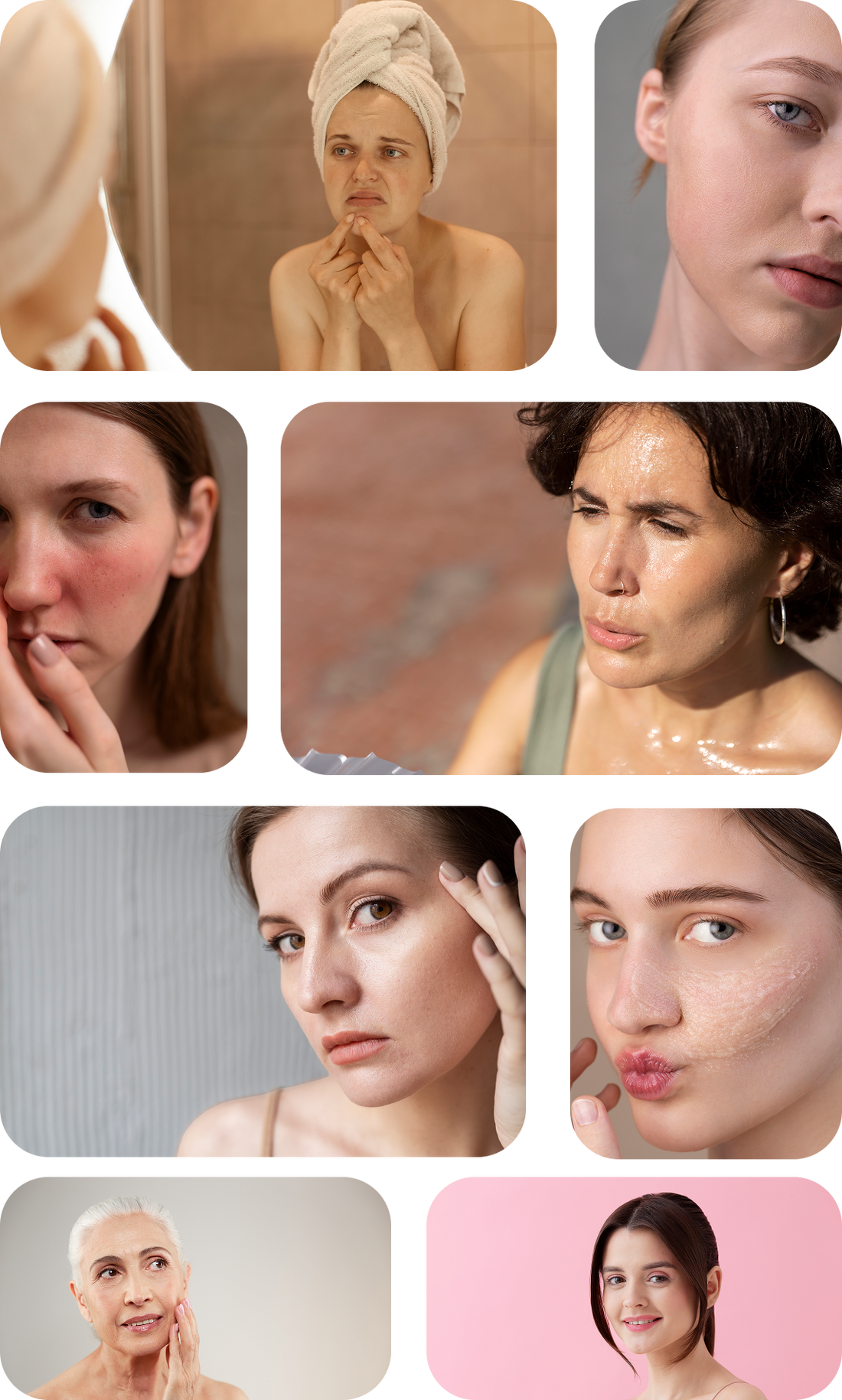
What skin type do I have?
The most common classifications are normal, oily, dry, and combination skin. Your skin type can change during life stages like puberty, pregnancy, or menopause. Adapt your skincare accordingly to keep your skin healthy. All Aurora Dionis Dermacosmetics products are suitable for sensitive skin, with a special collection for sensitive skin.

Dry Skin
Dry to very dry skin is thin and has fine pores. The sebaceous glands produce less sebum than in other skin types, which can make the skin feel tight, rough, or itchy. It lacks both oil and moisture and therefore requires intensive hydration and nourishment.
Characteristics of (very) dry skin:
- Faster formation of wrinkles
- Flaky or rough spots
- Thin skin structure
- Fine blood vessels visible
- Pulling or uncomfortable feeling
- Very fine pores
- Tends to become red faster
- May feel rough
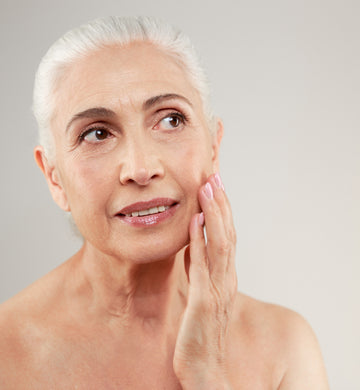
Mature Skin
Mature skin isn't a specific skin type, but rather refers to skin whose physiological functions are declining. A typical characteristic is the increase in wrinkles. Hormonal changes and slower cell metabolism affect the skin over time.
Characteristics of mature skin:
- Reduction of collagen and elastin
- Dehydration due to reduced blood circulation, sweat and sebum production
- Pigment spots such as age spots
- Faster and increasing formation of wrinkles and lines
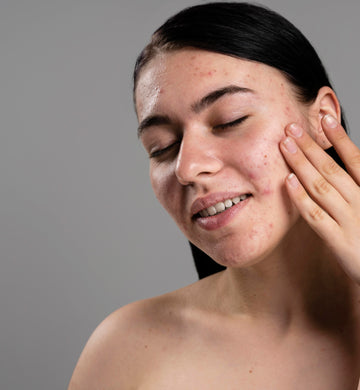
Acne & Oily Skin
Oily skin has large pores and is thicker than other skin types. Overactive sebaceous glands create an oily layer, which increases the risk of acne. This skin is less prone to wrinkles, but reacts strongly to overly aggressive cleansing. Choose a gentle cleanser and a well-balanced skincare routine to restore balance.
Characteristics of oily skin:
- Shines quickly
- Clearly visible pores
- Tendency to impurities and blackheads
- May feel tight after cleaning and then quickly regain its shine
- Relatively thick skin
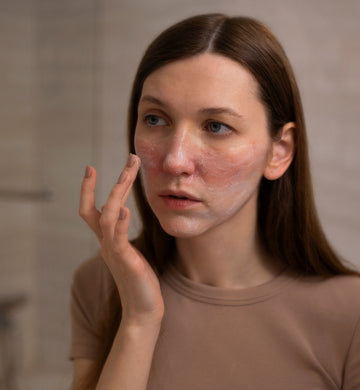
Rosacea and Eczema
Rosacea and eczema are skin conditions often accompanied by redness, irritation, and a sensitive skin barrier. The skin can react quickly to temperature fluctuations, stress, or the wrong skincare products. It's important to avoid irritating ingredients and choose gentle, soothing skincare that supports the skin barrier. Hydration and restorative ingredients help keep the skin calm and balanced.
Characteristics of rosacea or eczema skin:
- Rapid redness or blotchiness
- Dry or flaky patches
- Irritated or burning sensation
- Fine blood vessels visible (in rosacea)
- Itching or tightness (in eczema)
- Worsened by aggressive cleaning or strong temperature changes
- Benefits from gentle, fragrance-free products and sufficient moisturizing care
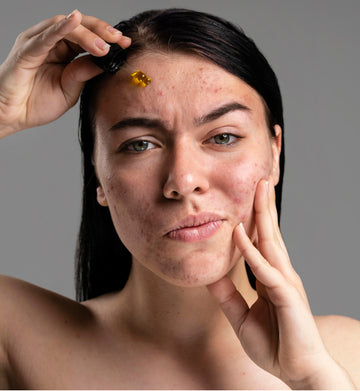
Combination skin
With combination skin, the areas of the face in the "T-zone" (forehead, chin, and nose) are often a bit oilier. The rest of the skin is sometimes slightly drier or normal. It is therefore a combination of dry and oily skin. Combination skin benefits from a gentle cleanser that doesn't dry it out or cause the oily areas to produce extra sebum. The care provides both moisture and nourishment.
Characteristics of combination skin:
- Combination of dry and oily areas
- Cheeks are drier
- T-zone is oily or shiny
- Often affected by pimples or blackheads in the T-zone
- Scaly patches or cracked cheeks
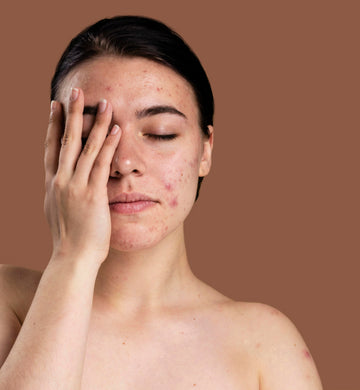
Sensitive Skin
Sensitive skin reacts quickly to stimuli such as weather conditions, cleansing, or skincare. It can become red, feel tight, or react to alcohol in cosmetics. An allergic reaction to the wrong products is often the cause. Avoid allergens and choose gentle skincare that respects the skin's acid mantle. Sensitive skin especially needs hydration and nourishment to maintain its balance.
Characteristics of sensitive skin:
- Turns red quickly
- Tight feeling after cream or make-up
- Reacts strongly with alcohol in cosmetics
- Tight and uncomfortable after cleaning
- Fine blood vessels visible
- Stains or impurities possible
- Faster lines and wrinkles
- Combination of dry cheeks and oily T-zone
- T-zone blemishes such as pimples or blackheads
- Scaly patches or cracked cheeks
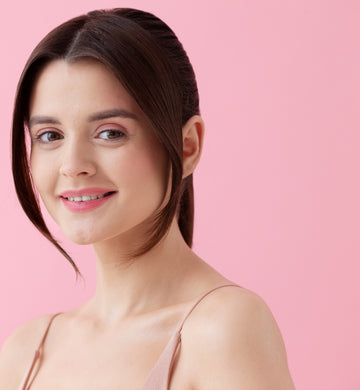
Normal Skin
Normal skin has fine pores, good thickness, and good blood circulation. It's well-hydrated with a balance of moisture and sebum.
Characteristics of normal skin:
- Smooth structure
- Pores barely visible
- Rarely redness or pimples
- Remains soft after cleaning, no flakes
- Does not feel dry or greasy
Symptomen

ACNE
Acne is a common skin condition that usually occurs during puberty, although it can occur at any age. It is characterized by blackheads, pimples, painful bumps, and sometimes scarring on the face, neck, chest, back, and shoulders.
Acne is caused by a combination of factors, including excessive sebum production, clogged hair follicles, inflammation, and bacterial infections. Hormonal changes, stress, heredity, certain medications, and cosmetics can also contribute to acne.
Acne can be classified into different grades, from mild to severe, depending on the degree of inflammation, the number of pimples and the presence of scarring.
Here are the different grades of acne and their characteristics:
Acne comedonica: the mild form of acne, characterized by black and white spots, also called comedones, on the face. This form of acne is not inflamed and can be treated with gentle ingredients and by cleansing the skin by a qualified specialist. A healthy lifestyle with a balanced diet, sufficient sleep, exercise, and stress reduction can contribute to healthy skin. Regular cleansing with gentle products can help keep pores clear and reduce sebum production.
Acne Juvenilis/Vulgaris: Acne juvenilis, also known as acne vulgaris, is a common skin condition characterized by inflamed and non-inflamed pimples, comedones (blackheads), and sometimes cysts on the face, back, and chest. It usually develops during puberty as a result of hormonal changes and excessive sebum production by the sebaceous glands. Acne vulgaris can range from mild to severe and can lead to scarring and psychological problems. It can be treated with gentle ingredients to keep pores clear and reduce sebum production. Our products have anti-inflammatory and antimicrobial properties that can help soothe and restore the skin. Your doctor can prescribe topical and oral medications, and in severe cases, a dermatologist may recommend other medications such as isotretinoin.
Papulopustular acne: This form of acne is characterized by red bumps and pimples on the face that are inflamed. It can be painful and sometimes leads to scarring. This form of acne can be treated with mild ingredients and topical products such as benzoyl peroxide and antibiotics.
Acne conglobata: This is a severe form of acne, characterized by large, painful bumps and interconnected subcutaneous abscesses. This form of acne can lead to deep scarring and is difficult to treat. More aggressive treatments, such as isotretinoin and oral antibiotics, are often necessary.
Acne fulminans: This is the most severe form of acne, accompanied by fever, joint pain, and a general feeling of malaise. It can cause scarring and also psychological problems. This form of acne often requires hospitalization and intensive treatment with isotretinoin and corticosteroids.

ROSACEA
Rosacea is a chronic skin condition that causes redness, pimples, bumps, and visible blood vessels on the face. Research shows that people with rosacea have more Demodex mites on their skin than people without the condition. Demodex mites are invisible parasites that feed on sebum and dead skin cells and can cause skin problems such as rosacea and Demodex folliculitis. Rosacea can also lead to eye problems and a warm feeling on the skin. Avoiding triggers such as harsh ingredients on the skin, sun exposure, and using appropriate skin care, along with a healthy lifestyle, can reduce and control symptoms, but the condition cannot be cured.
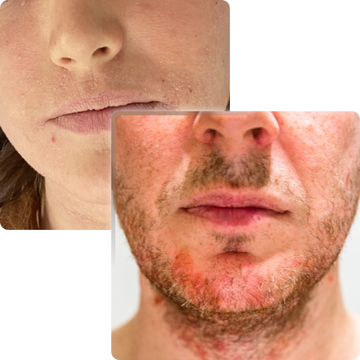
ECZEMA
Eczema is a common skin condition that can occur at any age. It's characterized by red, itchy, swollen, and sometimes scaly rashes that can appear on various parts of the body, including the hands, feet, neck, face, inner elbows, knees, and ankles.
The cause of eczema is not yet fully understood, but it appears to be a combination of factors such as genetic predisposition, a dysregulated immune system and external stimuli such as allergens, irritants and stress.
There are different forms of eczema, including atopic eczema, contact eczema, seborrheic eczema and nummular eczema.
Atopic eczema: This is the most common form of eczema and is often associated with allergies and asthma. Symptoms include itchy, red, dry, and scaly rashes on the knees, elbows, face, and neck. Heredity plays a significant role in the development of atopic eczema.
Contact dermatitis: This form of eczema develops when the skin comes into contact with an irritating substance, such as soap, perfume, latex, or nickel. Symptoms include itching, redness, swelling, blisters, and pain. Contact dermatitis can also be allergic in nature and develop after repeated contact with an allergenic substance.
Seborrheic dermatitis: This form of eczema often appears on the scalp, but can also occur on the face, neck, chest, and back. Symptoms include red, greasy, flaky, and itchy patches. Hormonal changes, stress, and certain medical conditions can contribute to the development of seborrheic dermatitis.
Nummular eczema: This form of eczema is characterized by round, itchy, and scaly patches that appear primarily on the legs, arms, and trunk. The cause of nummular eczema is not fully understood, but it appears to be related to dry skin and stress.
Natural remedies for eczema include avoiding triggers like certain foods and irritants, using moisturizing and nourishing ingredients, and applying soothing creams. However, it's important to emphasize that not all natural remedies are equally effective, and it's advisable to consult a doctor or dermatologist for the best eczema treatment.

YEAST INFECTION
Yeast infections are infections caused by fungi. They can affect various parts of the body, including the skin, nails, and scalp. Yeast infections are common in people of all ages and can affect both men and women.
Symptoms of a fungal skin infection include redness, itching, flaking, a burning sensation, and sometimes blisters. Fungal infections on the scalp can lead to itching, flaking, and hair loss.
The cause of fungal infections can vary. Fungal skin infections are often caused by fungi that naturally occur on the skin and can multiply under certain conditions, such as warm and moist environments. Scalp infections can be transmitted through direct contact with an infected person.
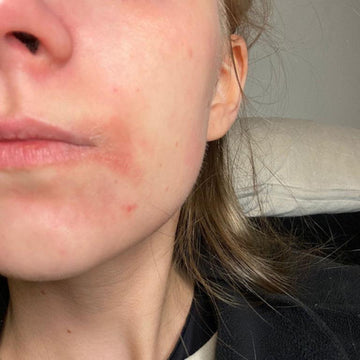
CHEILITIS / PERLECHE
Cheilitis and perleche are both skin conditions that can occur around the mouth, but there are some differences between the two.
Cheilitis is a general term that refers to inflammation or irritation of the lips. It can occur for various reasons, such as sun exposure, allergic reactions, infections, or as a side effect of medications. Symptoms of cheilitis may include dry, flaky lips, swelling, redness, cracking, or painful chapping.
Perleche is caused by a fungal or bacterial infection, or a combination of both. Symptoms of perleche include redness, pain, cracking, crusting, and sometimes even bleeding.
In short, cheilitis is a broad term that can refer to several different lip problems, while perleche is a specific form of cheilitis characterized by inflamed corners of the mouth and is usually caused by an infection.
Other factors that can aggravate perleche include hormonal changes, medication use, salty toothpaste, and a weakened immune system.
Using toothpaste that's too salty can contribute to the development of perleche, as salt can dry and irritate the skin, leading to cracks around the mouth. If you have perleche, switching to a toothpaste without sodium lauryl sulfate (SLS) and with less salt can help. This can reduce irritation and promote skin healing.
Coconut oil can help reduce bacteria in the mouth and improve overall oral hygiene, but it does not have the same cleansing properties as toothpaste.
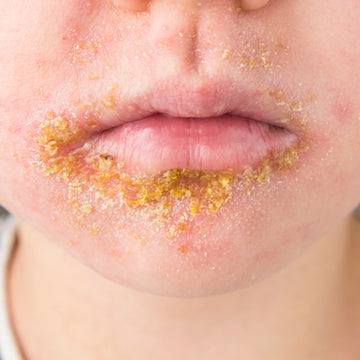
IMPELLET BEARD
Impetigo, also known as impetigo, is a contagious skin condition caused by bacteria. It is most common in children and causes small red bumps and blisters that turn into yellow crusts. Impetigo can appear anywhere on the body, but is most common around the nose and mouth.
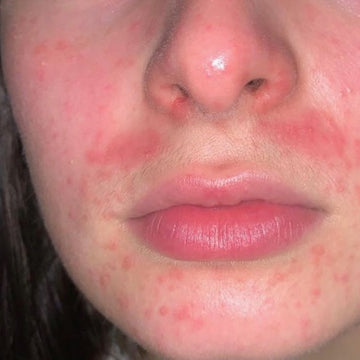
PERIORAL DERMATITIS
Perioral dermatitis is a skin condition characterized by small red bumps and pimples around the mouth, nose, and sometimes the eyes. It can also be accompanied by flaking and itching. The cause of perioral dermatitis is not fully understood, but it may be related to the use of certain cosmetics, creams, steroids, or hormonal changes.
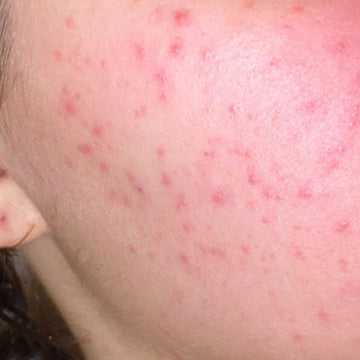
FOLLICULITIS
Folliculitis is a condition in which hair follicles become inflamed. It can occur anywhere on the body where hair grows, but is most common on the scalp, neck, buttocks, thighs, upper arms, the beard area in both men and women, and sometimes along the jawline.
Symptoms of folliculitis include small, red bumps around hair follicles, sometimes with a small pimple in the center. The skin can be tender, painful, and itchy. If the folliculitis is deeper in the skin, more severe symptoms can occur, such as pus formation and scarring.
Natural treatments for folliculitis can help reduce symptoms and cure the condition. Here are some tips:
- Keep your skin clean and dry: Wash the affected area with mild soap and water and dry thoroughly. This can help remove bacteria that cause folliculitis and may also reduce irritation.
-
Use warm compresses: Apply a warm, damp cloth to the affected area to reduce inflammation and improve blood flow.
- Avoid tight clothing: Tight clothing can cause chafing and irritate the skin, which can contribute to folliculitis. Instead, wear loose, breathable clothing.
- Use natural remedies: Some natural ingredients, such as tea tree oil, aloe vera, and coconut oil, have antibacterial properties and can help reduce inflammation and heal folliculitis.
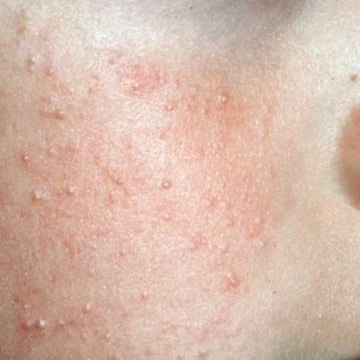
Keratosis Pilaris
Keratosis pilaris is a common, harmless skin condition in which hair follicles become blocked by a buildup of keratin, a protein naturally found in the skin. It can affect people of any age, but is common in children and young adults and can worsen during puberty.
Keratosis pilaris is characterized by small, rough bumps on the skin, usually on the upper arms, thighs, buttocks, and sometimes on the face. The bumps are usually white or red and may be slightly itchy or irritated. The condition is not contagious and not serious, but it can be cosmetically unsightly and some people find it uncomfortable.
There are some natural remedies that can alleviate the symptoms.
SKIN CANCER

There are several types of skin cancer, including melanoma, basal cell carcinoma, and squamous cell carcinoma, and it can occur at any age. Skin cancer is usually caused by sun exposure.
There are different types of skin cancer, and each type can vary in severity. Here are some examples of moderate to severe skin cancers:
Basal cell carcinoma (BCC): This is the most common form of skin cancer. It begins in the cells covering the lower layer of the epidermis. It can appear as a waxy, shiny bump or a sore that doesn't heal. Although rarely fatal, it can grow deep into the skin and damage nearby tissues and bone.
Squamous cell carcinoma (SCC): This is a type of skin cancer that begins in the cells of the top layer of skin. It can appear as a red, scaly bump or a sore that doesn't heal. If not treated in time, it can spread to other parts of the body.
Melanoma: This is a type of skin cancer that begins in the cells that produce pigment. It can appear as a dark, irregular patch on the skin. If not treated in time, it can spread to other parts of the body and be fatal.
Merkel cell carcinoma: This is a rare form of skin cancer that begins in the cells of the lower epidermis. It can appear as a purple-red lump or ulcer that grows rapidly and can spread to other parts of the body.
It's important to have any skin changes, such as new spots, sores, or bumps, checked by a dermatologist. Early detection and treatment of skin cancer can increase its success and reduce the risk of spreading to other parts of the body.
Wearing sunscreen and protective clothing can help prevent skin cancer. Treatment often involves surgery, radiation, or chemotherapy.
Bereik en Behoud een Gezonde Huid
Ontdek de essentiële stappen om je huid te begrijpen, te verbeteren en te beschermen voor langdurige resultaten.



